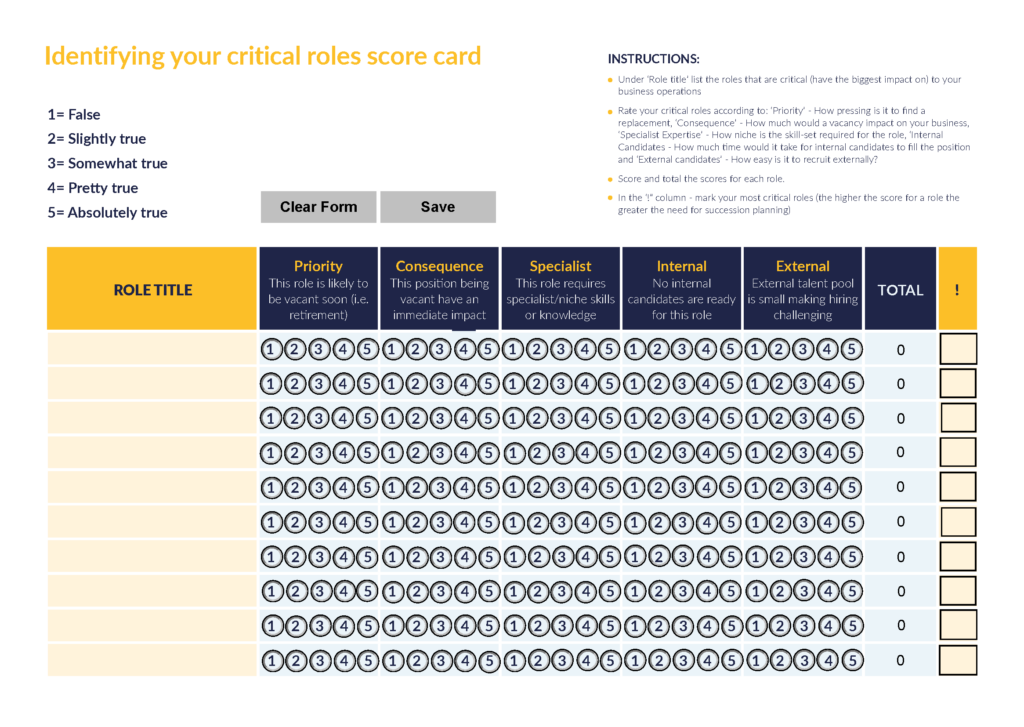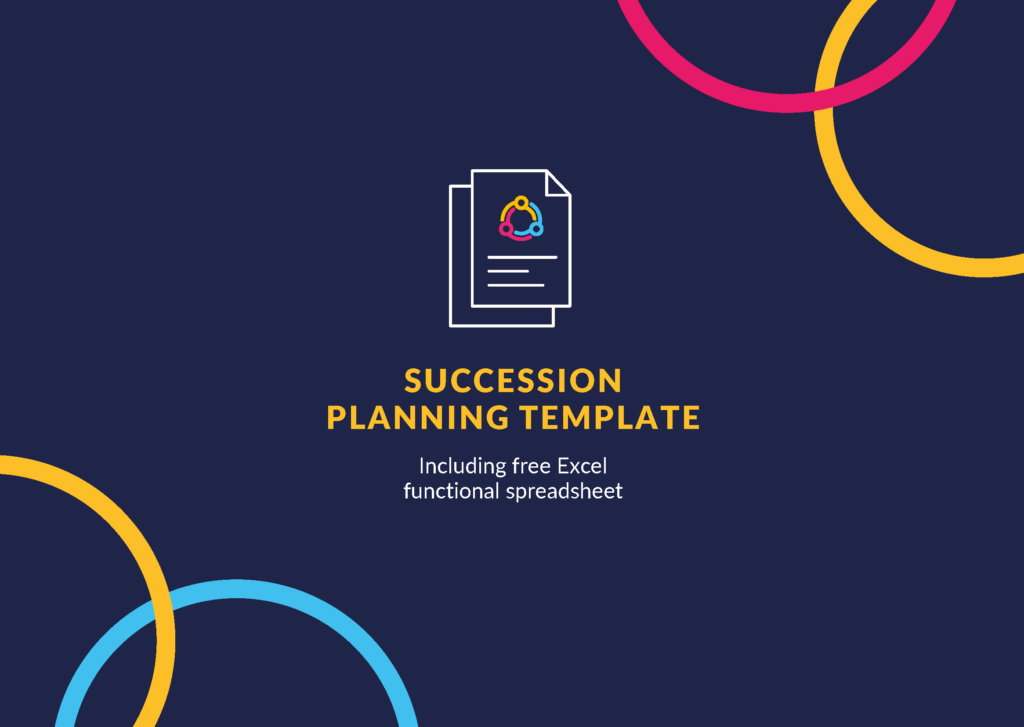Use our comprehensive succession planning template to identify critical roles and high potential employees
- Develop a comprehensive plan using our succession planning template
- Identify critical roles and employees who can fill them
- Get a clear view of all your succession candidates
- Plan for every possibility with our detailed worksheets
What is succession planning?
Succession planning is one of the most important, yet overlooked, aspects of running a business.
Every company should have a succession plan in place to ensure that critical roles are filled in the event of an unexpected departure.
But creating a succession plan can be daunting, especially if you don’t know where to start.
That’s where we come in. We offer a comprehensive set of free templates that make succession planning simple and straightforward.
Succession planning is a process that businesses undertake to identify high potential employees in their existing workforce.
A successful succession plan then continues to develop these employees, improving leadership skills and key competencies to future proof their workforce.
Approaches to succession planning
A succession plan is a HR process that falls under talent management. There are two main approaches to succession planning that focus on finding expertise in house for potential future vacancies and leadership positions.
Talent development approach
This approach to a succession plan process starts by analysing individual employees and their current key skills and competencies.
It considers their potential within the framework of your organizational chart, and addresses the development path they need to follow to move into leadership roles.
Succession planning approach
This approach to a succession plan process starts by identifying critical roles within your leadership team and wider company.
It evaluates how each critical role impacts the company’s ability to grow, then assesses a business succession plan to fill these roles in case of unexpected leadership losses.
Benefits of succession planning
Regardless of your motivations behind succession planning, implementing an effective process is likely to create a positive impact on employee retention and business operations.
Succession planning is a critical component of organisational success, as it helps to ensure that there is a pipeline of talent ready to take on leadership roles when needed.
When done well, succession planning can help to create a culture of excellence within an organisation that attracts and retains top talent.
How a succession plan affects employee experience
A traditional succession plan focused around competencies. It enabled HR leaders to select the right people for leadership positions and create careers based on competency level
With the emergence of cloud based HR operations software, business requirements shifted. Now, HR leaders want to include employee engagement, experience and diversity included in their HR software.
This means that an effective succession plan should now focus on the employee’s experience, factoring in their lives, jobs and productivity.
What is included in a succession plan?
Succession planning typically includes processes such as development, succession candidate identification and succession candidate assessment and development.
Succession plans may also include provisions for Awards, Recognition and Renewal programs to encourage individuals to stay with the organization and develop their skills.
Succession planning process: requirements for success
Our succession planning template outlines key areas to focus on for success. However, how can you be sure that any succession plan that you implement will be effective?
In our guide, we’ve included the most important factors for success that you need to consider.
These include:
- Leadership is invested in a succession plan process
- Employees are aware of your succession plan strategy
Succession planning template structure
An effective succession planning process is broken down into different stages. Carrying it out manually can sometimes be a tricky task, so our succession planning template is divided into seven interlinked worksheets.
Completing each of these worksheets will give you a rounded view of your succession candidates. It’ll help you to identify critical roles and discover the promising employees who you can develop to fill them.
The seven steps covered in our effective succession planning template are:
Identify key positions
Understanding which positions are critical to business growth is essential in all succession plans.
This succession planning worksheet enables you to identify which roles are critical to your organisation’s operational activities and strategic objectives.
The simple-to-use critical role score card enhances your knowledge of each department and their key positions. It helps you to rank roles based on:
- Priority
- Consequence
- Specialism
- Internal talent
- External opportunities

Business requirements of key roles
The second stage of our succession planning template helps you to understand what competencies and capabilities are required for each of the key positions you’ve highlighted.
Gathering information about each critical role from a wide range of sources and collating it into our planning template allows you to asses what is important now, and what development activities need to be implemented.
Understanding key roles and their competencies allows you to link your succession planning strategic plan to overarching business objectives.
Identify high-potential employees
Use the third of our succession planning templates to identify leadership candidates and high potential employees.
Our candidate consideration questionnaire enables you to determine who is interested in, and who has the potential, to fill key positions in your organisation.
This simple succession planning template helps you to create a succession planning process that involves employees in their own development opportunities, creating a high potential talent pool.
The candidate consideration questionnaire will help you to establish a set of measurable criteria that you can use to evaluate overall candidate readiness fairly and accurately.
Calculate readiness rating
Understanding the readiness rating of each of your high potential employees allows you to plan each succession process in advance.
Included in the worksheet is each potential candidate for a succession position, combined with their competency and readiness score.
Readiness rating is something that develops over time, so this stage of the succession planning template should be re-evaluated on an ongoing basis. For example, a department manager may show potential as a future C-suite executive, but may need to spend some time at director level first.
Create skills gaps profiles
There are numerous ways to assess employee development over time. We believe that the most objective and effective method is to use a variety of validated assessment methods, for example 360 appraisals.
However, it’s important to then measure this feedback across the board to truly understand the future potential of your entire workforce.
Using our candidate gaps profile template allows you to understand the success criteria for any position. It helps you understand the development path that any potential successors need to follow.
Included in this stage of our succession planning template are:
- Employee skills
- Employee competencies
- Educational background
- Readiness for succession
- Development opportunities
Implement candidate development plans
Once you have an understanding of candidate readiness and skills gaps for any potential successor, it’s key to use this information to create informed development plans.
It’s important to involve each potential successor in this process, and agree measurable deliverables that can be tracked over time.
This worksheet also outlines the methods that you and your employee will use to achieve the agreed deliverables. For example, this could include coaching, mentoring or educational training.
Using our succession planning template to understand employee development helps you to create action plans that outline actions in three stages:
- 3 to 6 months
- 6 to 12 months
- 12+ months
Measure succession planning effectiveness
Of course, there needs to be a way to assess how effective your succession planning improvements are. We’ve included an effectiveness evaluation worksheet in our succession planning template to help you measure the key points of an effective process.
It’s critical that your succession planning process aligns with overall business operations and objectives, which means that you need to choose evaluation metrics that reflect company goals.
These can include quantitative measures, such as turnover rates, or qualitative measures, such as engagement levels. Our worksheet highlights some of the most common succession planning measurement metrics, with space to add your own business-specific values.
Download our free succession planning template below:

